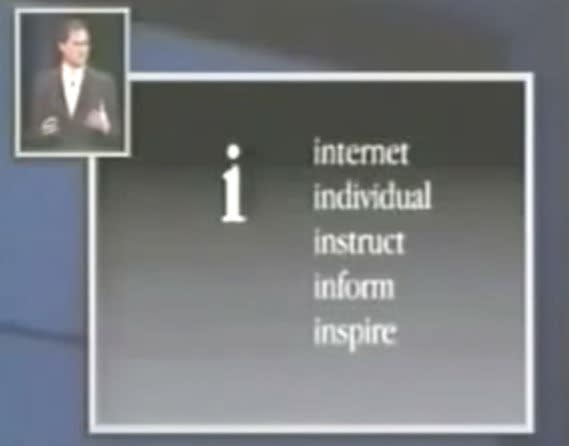Steve Jobs
We’ve been seeing it for years. The iMac, iPod, iTunes, iPhone, iPad — the omnipresent “i” prefix has marked most Apple products since the release of the iMac in 1998. But why? What does it mean?
The Internet has been abuzz recently with remembering exactly what Apple’s “i” stands for. At an Apple event in 1998, Steve Jobs introduced the iMac, explaining the link between “i” and “Mac.”
“iMac comes from the marriage of the excitement of the Internet with the simplicity of Macintosh,” he said. “We are targeting this for the no. 1 use that consumers tell us they want a computer for, which is to get on the Internet simply and fast.”
In 1998, the “i” in iMac stood for Internet. Jobs followed these statements with a slide that expanded upon what else the “i” means to Apple:

Video: YouTube, EverySteveJobsVideo
Besides Internet, Apple's prefix also stood for individual, instruct, inform and inspire.
Since then, the “i” has moved beyond its Internet-centric meaning; Apple probably didn’t have the Internet in mind when naming the original iPod.
When the iPhone was announced in 2007, one of its three key ingredients was Internet communication, bringing the “i” back to its original intended meaning of Internet. (The other two fundamentals were music and phone calls.)
Since then, nearly every device has had some form of Internet connectivity built in, and the “i” has lost its association with that specific meaning and has come to represent the Apple brand.
But as Apple continues to grow into other markets, including smartwatches and TV boxes, its famous prefix seems to be falling to the wayside. Instead of iWatch and iTV, we have Apple Watch and Apple TV. Perhaps this is because we no longer need to know our devices connect to the Internet — it's something we've come to expect.






No comments:
Post a Comment